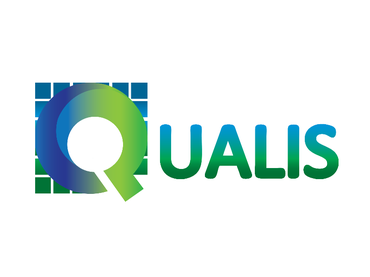Creation of Family Farming Terms in LIBRAS
Visualizações: 219DOI:
https://doi.org/10.56579/rei.v6i3.1538Keywords:
Sign Language, Terminology , Family AgricultureAbstract
This work is an excerpt from Magalhães' (2021) dissertation. The aim of the research was to create and validate signs for terms related to Family Farming, which do not exist in LIBRAS, and to organize a bilingual glossary based on linguistic analyses in lexicographical records. To interpret the information collected and understand the meanings of the researched terminology, the study adopted a descriptive and interpretative research approach with a quantitative-qualitative focus, including statistical analysis of the terms and qualitative interpretation of the data. The methodological steps began with the selection of specific terms from Portuguese dictionaries, validated by a focus group from the Agricultural and Environmental Areas. Subsequently, the terms were researched in LIBRAS dictionaries and by bilingual professionals, with the creation of sign-terms proposed, which were validated by the local Deaf Association, interpreters, and LIBRAS professionals from the Amazon. As a result, fifty terms were cataloged, of which forty-four were created and six were identified as being in use by the Deaf community. The signs were compiled into a bilingual glossary, freely accessible in a repository at the University of São Paulo (USP), titled "Family Farming Terms in LIBRAS" - a tool for facilitating communication between Deaf people, professionals in related fields, and anyone interested.
Downloads
References
CAPOVILLA, Fernando César. RAPHAEL, Walkíria Duarte. Dicionário Enciclopédico Ilustrado Trilíngue da Língua de Sinais Brasileira, v. I e II. São Paulo, Edusp, 2001.
BRASIL. Ministério da Educação. Política Nacional de Educação Especial na perspectiva da Educação Inclusiva. Brasília, MEC/SEESP, 2008.19p.
BRASIL. Lei 10.436, de 24 de abril de 2002. Dispõe sobre a Língua Brasileira de Sinais – Libras e dá outras providências. Disponível em http://www.planalto.gov.br/ccivil_03/leis/2002/l10436.htm. Acesso em: 20 fev. 2020.
BRASIL. Decreto nº 5.626, de 22 de dezembro de 2005. Regulamenta a Lei nº 10.436, de 24 de abril de 2002, que dispõe sobre a Língua Brasileira de Sinais – Libras, e o art. 18 da Lei nº 10.098, de 19 de dezembro de 2000. Diário Oficial da União. Disponível em http://www.planalto.gov.br/ccivil_03/_Ato2004- 2006/2005/Decreto/D5626.htm Acesso em: 20 fev. 2020.
CHOMSKY, Noam. 1980. Reflexões sobre a linguagem. São Paulo: Cultrix.199p.
CHOMSKY, Noam. Horizons in the study of language. D.E.L.T.A 13, Edição Especial: Chomsky no Brasil, 1997.
FELDEN A. Agroecologia: princípios e técnicas para uma agricultura orgânica sustentável. In: AQUINO, A. M. de; ASSIS, R. L de (Ed.). Brasília, DF: Embrapa Informação Tecnológica; Seropédica: Embrapa Agrobiologia, 2005. Disponível em: https://www.agencia.cnptia.embrapa.br/recursos/AgrobCap1ID-Sim092KU5R.pdf Acesso em: 20 nov. 2020.
GONÇALVES FILHO, José Sinésio Torres. Signwriting da Linguagem Matemática para o Ensino de Geometria Plana. – (Dissertação de Mestrado) Programa de Pós- Graduação em Educação em Ciências e Matemática (IEMCI/UFPA), 2018. Disponível em:http://ppgecm.propesp.ufpa.br/index.php/br/teses-e-dissertacoes/dissertacoes/230-dissertacoes-2018. Acesso em: 20 de fev. 2021.
LABOV, W. Padrões sociolinguísticos. Tradução Marcos Bagno, Maria Marta Pereira Scherre, Caroline Rodrigues Cardoso. São Paulo: Parábola Editorial, 2008 [1972].392p.
LIMA, Vera Lúcia Souza e. Língua de sinais: Proposta terminológica para a área de desenho arquitetônico. 2014. Universidade Federal de Minas Gerais. Belo Horizonte, 2014. 272p.
NASCIMENTO, Sandra Patrícia de Faria do. Representações Lexicais da Língua de Sinais Brasileira: Uma proposta lexicográfica. Brasília. Universidade de Brasília, 2009. 290p.
QUADROS, Ronice Müller de. Políticas linguísticas e educação de surdos. In: V Congresso Internacional e XI Seminário Nacional do INES, 2006, Rio de Janeiro. Anais do Congresso: Surdez, família, linguagem e educação. Rio de Janeiro: INES, 2007. v.1. p.94 – 102.
QUADROS, Ronice Müller de. KARNOPP, Lodenir Becker. Língua de Sinais Brasileira: Estudos Linguísticos. Porto Alegre: ArtMed, 2004. DOI: https://doi.org/10.18309/anp.v1i16.560
QUADROS, Ronice Müller de. Educação de Surdos. A aquisição da linguagem. Porto Alegre. Editora Artmed, 1997.
SACKS, Oliver. Vendo vozes: Uma viagem ao mundo dos surdos (L. T. Motta, trad). São Paulo: Companhia das Letras. 2010. 216p.
SAUSSURE, Ferdinand de. Curso de Linguística Geral. São Paulo: Cultrix, 2010.312p.
VYGOTSKY, Lev. Semionovich. Pensamento e linguagem. Lisboa: Antídoto, 1979. 213p.

Downloads
Published
How to Cite
Issue
Section
License
Copyright (c) 2024 Interdisciplinary Studies Journal

This work is licensed under a Creative Commons Attribution 4.0 International License.
The Journal of Interdisciplinary Studies adopts the Creative Commons Attribution 4.0 International License (CC BY 4.0), which allows for sharing and adapting the work, including for commercial purposes, provided proper attribution is given and the original publication in this journal is acknowledged.












